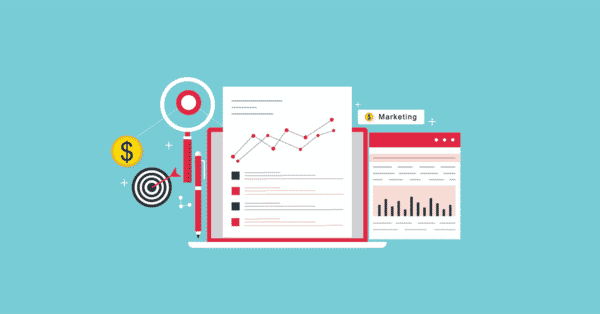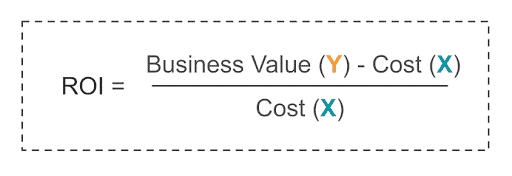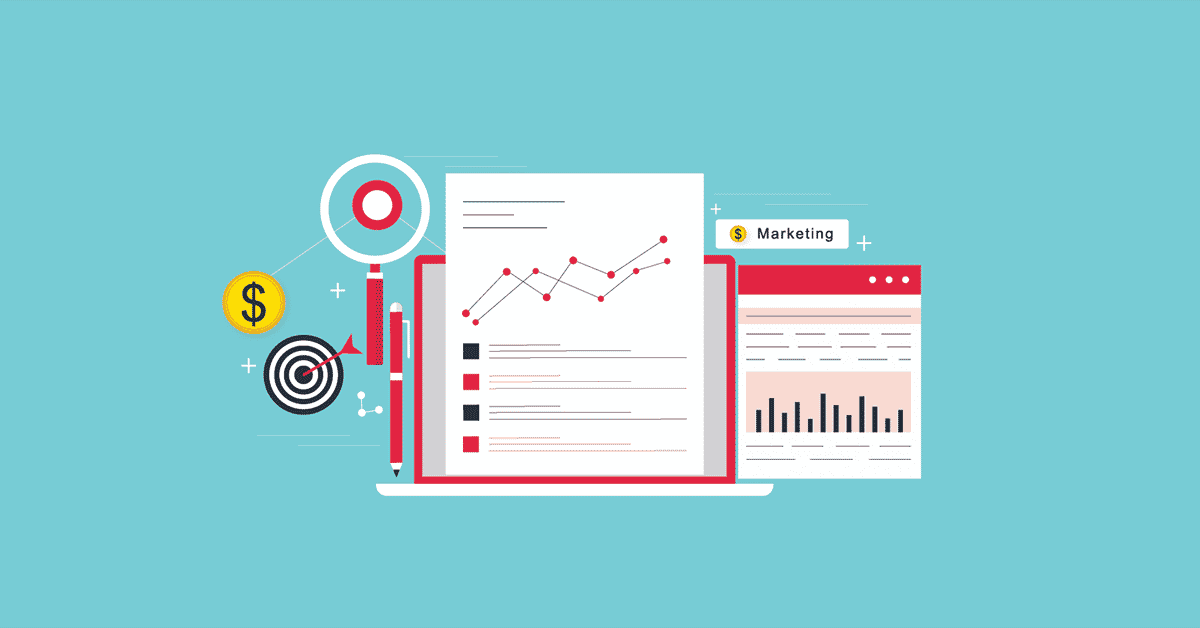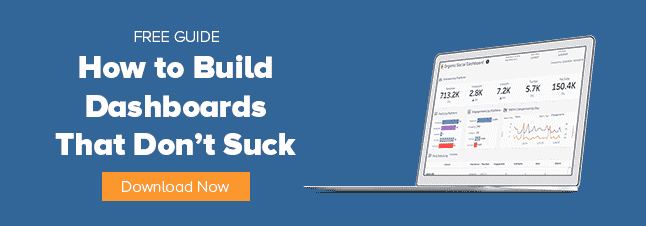
If you’re a marketer, you absolutely have to be able to show that you’re generating ROI. Your stakeholders deserve to know how (or if) their investment will help grow their business.
Measuring ROI is simultaneously the easiest and hardest thing for most marketers. And it really comes down to two reasons.
We Don’t Know What Our ‘Y’ Is
On the one hand, calculating ROI isn’t hard. You can employ a basic formula like this …

The return on marketing investment (ROI) is equal to the business value that you’re generating (Y) minus cost (X), then divided by cost (X). For every X dollar we spend, we want to generate Y.
The problem is that most marketers are not using the right Y. That variable needs to represent a revenue-driving activity like producing more leads or eCommerce transactions.
At the end of the day, the Y can’t be, oh man, I want to generate awareness. That might be a goal, but awareness doesn’t show up on the P&L.
What is your Y? What is the point of the time and money that you spend on marketing? Your stakeholders want to see how their marketing investment leads to some kind of valuable activity, like generating a lead or purchase, that translates to more sales and revenue.
We’re Using the Wrong Tools to Measure Our ‘Y’
The other obstacle to measuring marketing ROI? We aren’t getting all the data we need, and worse, a lot of the data we do get isn’t accurate.
You need three elements to analyze and optimize marketing performance.
- Impression and cost data from your marketing platforms. How much does it cost to generate awareness? How much awareness did we buy?
- Data on your customers’ conversion paths. Which channels lead your customers to convert? And how many touches does it take before someone converts?
- Conversion data. How many conversions did your marketing campaigns generate? What was the value of that activity?
Sounds pretty simple, right? The problem is that most marketers aren’t getting accurate data because they’re trusting third-party cookies as a source of truth.
Why You Can’t Trust Third-Party Cookies
Let’s say you’re running a very basic campaign with ads on LinkedIn, Facebook and Google Ads. You’re also using email, and you’ve optimized your site for organic search.
Most marketers rely on third-party cookies to measure the effectiveness of their campaigns. If someone views ads served by all three platforms (Facebook, Google or LinkedIn) and then converts on your website at some point, each of those platforms’ third-party cookies will record the conversion.
All three will take credit for that one conversion, which is the Y in this situation. So when they pull together data for the entire campaign, a lot of marketers will report a total of three conversions when there was only one. As a result, it makes the ROI for paid digital media look much higher than it actually is.
It’s the biggest lie that marketing tells. And what’s more – it’s not going to work anymore.
By 2025, Google Chrome will stop supporting third-party cookies, following in the steps of Mozilla’s Firefox and Apple’s Safari browsers. They won’t be able to tell you if your digital ads resulted in a conversion.
It’s a huge problem for digital marketers. And it’s why marketers need to make first-party tracking the foundation of how they measure their Y.
First-Party Cookies Are the Future
First-party cookies are still well-supported by browsers and devices, so they can continue to track website visits, conversions and other important actions. Google Analytics is the best first-party cookie you can be using right now.
Unlike third-party cookies, first-party cookies create a one-to-one relationship between users and conversions. If one user converts, Google Analytics counts one conversion, not three. First-party cookies eliminate the noise and give you an accurate, trustworthy measure for your Y.
When third-party cookies die out, you’ll lose the ability to monitor view-through conversions, i.e. someone sees your ad and doesn’t click it, but does visit your site sometime later and convert.
Fortunately, first-party cookies can still help you track where website visitors are coming from, so you can see which marketing channels generated the visit and how many touches it requires. You can still record the path to conversion, which unlocks the ability to use multi-touch attribution models, like linear, time-decay and U-shaped.
If you can make the leap from third-party cookies to first-party, you’ll be ahead of the vast majority of marketers. But it doesn’t have to end there.
Leveraging First-Party Data
Once you have first-party cookies as the foundation of your measurement strategy, you can build on that by incorporating first-party data, like the name and contact information that’s being collected when someone completes a lead form or a transaction on your website.
You can also bring in data from your CRM database, expanding your pipeline so you can see how leads become opportunities and ultimately new customers. In one view, you can see the entire journey from cost to customer.
This is data that you own and control. Nobody can take it away from you.
At this stage, you can also start using data-driven attribution because you have pathing data for everyone in your funnel, allowing you to compare converting and non-converting paths, so you can see the relative impact of each channel and tactic on conversion activity. The result is a more accurate picture of ROI value.
By using media mix modeling (aka marketing mix modeling) you don’t even need pathing data from first-party cookies. If you can gather four things …
- Impression data by channel
- Cost data by channel
- Conversion totals
- All sales (or revenue)
… you can apply a model that shows how much value each channel is contributing to your results, which you can then use to plan and predict the results of future campaigns.
How to Move Beyond Third-Party Cookies
There are three things I recommend for any marketer who wants to gain a better understanding of their impact on ROI.
- Take control of your first-party cookie data. Implement Google Analytics 4, and make sure that your web property or app is tagged to track your essential conversion events and customer paths.
- Implement a tracking strategy that lets you connect your customer journey from cost to customer. For most of us, that means using a consistent campaign naming or tagging strategy so that your web analytics can tell which channels and campaigns produced each conversion. But it’s also possible to use first-party cookies, form data and your CRM database to go beyond web conversions — it’s a little outside the scope of this post, but our team can help you with that.
- Commit to reaching the next level of insight in the next 90 days. Do you rely on third-party cookies for measuring ROI? Take the next three months to switch to a first-party strategy. And if you’re already doing that, look at how you can take the next step, either by incorporating sales and lead data or by moving into modeling.
Big changes are happening, and marketers must adapt their measurement strategy to meet the times.
Just remember: As a marketer, your hard work is creating real and measurable value for your company and clients. By adjusting how you use marketing data, you’ll be able to illustrate your impact even more clearly and confidently.
By the way, if you need help evolving your analytics and reporting, our team can help. Let’s talk.

